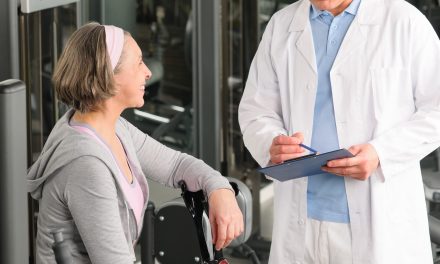
The One “Drug” You Need to Prescribe to Every Patient (Part 1)

- Drug (1):
- A substance intended for use in the diagnosis, cure, mitigation, treatment or prevention of disease (prescription drugs, e.g., drugs for treating high blood pressure)
- A substance other than food intended to affect the structure or function of the body.
The above-listed definition of drug is an excerpt from the Merriam-Webster online dictionary. You are probably asking what this has to do with the chiropractic profession. The chiropractic profession by choice has excluded aggressive interventions, such as prescription medication and surgery, from its treatment methodology. The Illinois Medical Practice Act specifically prohibits the use of prescription medication and surgery for chiropractic physicians. Of course, even though both prescription medications and conservative interventions can be used in diagnosis, treatment, prevention of disease that can affect the structure or function of the body, there is a big difference between the two.
Impact of Conservative Care
Conservative care interventions like nutritional recommendations and exercise can be viewed as “drugs” in the sense that they can have a major healing impact. When I describe conservative care interventions as “drugs” in this article, I am, of course, not referring to “drugs” in the literal sense, but rather to emphasize the impact conservative care can have. For example, patients with Vitamin D deficiency given a therapeutic dose of vitamin D (such as 5,000 units/day for 30 days) because of widespread musculoskeletal pain, fatigue, and depressed mood, were effectively givenVitamin Das a cure, treatment or prevention of disease. This supplement affects the function (physiology) of the body.
Exercise can also be viewed as a “drug” In the sense that it has powerful therapeutic effects. See below for some of the beneficial effects (2,3,4,5).
Exercise can:
1. Help control weight (weight loss and weight maintenance)
2. Reduce risk for cardiovascular disease
3. Reduce the risk of type 2 diabetes & metabolic syndrome
4. Reduce the risk of certain types of cancers including but not limited to colon, breast, endometrial and lung
5. Reduce the risks of contracting osteopenia and osteoporosis
6. Reduce the risk of hip and pelvic fracture in the elderly
7. Improve balance and coordination
8. Decrease fall risk in the elderly
9. Decrease pain and increase function in patients with osteoarthritis
10. Maintain lean muscle mass and reduce body fat percentage
11. Control chronic pain with conditions such as fibromyalgia and other autoimmune diseases
12. Promote independence, confidence and self-efficacy
13. Improve mood
14. Assist in the treatment of psychiatric disorders such as depression, anxiety, bipolar, mood disorders and other conditions
15. Help in the treatment or prevention of substance abuse or other addictions
16. Increase the length and quality of life
17. Prevent or slow cognitive decline in conditions like dementia or Alzheimer’s
18. Improve local or global mobility
19. Improve local or global stability
20. Improve circulation
21. Improve respiratory capacity
22. Improve body mass index (BMI)
23. Improve measures of strength
24. Improve power output
25. Improve sport performance and functional capacity
26. Improve sleep quality
27. Increase sexual arousal
28. Improve energy levels
29. Reduce fatigue
30. Improve mental alertness
That’s quite a long list yet it is not all-inclusive! We are finding more benefits from exercise, for both acute and chronic disease.
Dropping the Ball
Our U.S. healthcare system from top to bottom has dropped the ball. We have an expensive, relatively inefficient, wasteful system that ranks near the bottom in outcomes, access, efficiency, and equity when compared to other industrialized (“Western”) nations (13). We are looking for cheap yet effective solutions to our healthcare problems, yet we are ignoring the message of physical activity as a primary strategy in preventing disease, improving health and cost containment.
Health care costs are spiraling into unchartered territory. Medical bankruptcy is at an all-time high and rising. Doctors are looking for evidence-based, cost-effective, less invasive and less risky options for their patients. Simple exercise prescription consistently shows as a cheap, yet effective, solution; however, we (the medical community) aren’t recommending this intervention enough to patients.
Physical activity is both cost-effective and risk-effective. There is relatively little out of pocket expense associated with exercise prescription. Simple recommendations are ignored. Suggestions like walking 7,500-10,000 steps/day, walking the dog 30 minutes per day, or embarking on an at home bodyweight strength training program 30 minutes each morning before work, won’t financially set the patient back nor inconvenience them from a time standpoint. The health risks of simple exercise are typically viewed as less than those of other interventions, such as medications, injections or surgical procedures.
Physician Culpability
It goes without saying that having the title of doctor comes with responsibility. One of the responsibilities that hasn’t been met is spreading the message of physical activity. Physical activity is the most effective solution to the inactivity and chronic disease crisis bearing down on our country.
Research indicates that many of our medical colleagues have not had any formal training in exercise science, nor exposure to physical activity guidelines (6, 7, 8). Best estimates indicate that approximately 50% of all medical physicians have no training in this area (7). Research indicates the more likely that our medical colleagues are to participate in the CDC guideline of 150 minutes minimum of physical activity per week, the more likely they are to prescribe physical activity to their patients (10, 12). The same study also notes that physical activity levels during medical school remain fairly constant on an individual basis, yet medical students found physical activity prescription less relevant to their daily practice, with the number going from 69% to 53% over the course of the standard 4-year medical training (10). Research indicates that, in clinical practice, approximately 34% of adults reported some sort of physical activity counseling by their medical physician (12). The reduction in relevance of physical activity consultation and prescription over the course of a physician’s career is downright depressing.
Physical Activity is not Emphasized
It appears that the message of the importance of physical activity is not emphasized sufficiently during medical school, with physical activity seen as less important and less prescribed in daily clinical practice. Ultimately, it appears as if the individual physicians’ own physical activity habits influence prescription practices during clinical practice more so than any other variable. “Talking the talk” isn’t as beneficial as “walking the walk.”
Widespread data on chiropractic physical activity training and prescription practices to date is lacking. An initial pilot study done at Canadian Memorial Chiropractic College (CMCC) shows extremely favorable attitudes towards physical activity counseling by students and clinicians. The study also notes that a significant percentage of students met or exceeded physical activity guidelines (15). However, this was an initial study at an academic institution with limited patient sampling. Extrapolating this study to the profession at large cannot and should not be done. It is much more likely that chiropractors are as culpable as other health care professionals in the inactivity/sedentarism crisis.
Chiropractic physicians are exposed to exercise as part of their required curriculum but may not be sufficiently trained in taking exercise as a vital sign nor in prescribing evidence-informed physical activity guidelines to patients. Specifically, chiropractic training introduces specific exercises for many of the neuromusculoskeletal conditions, such as back pain, neck pain, sciatica, etc. that routinely are presented to our offices, but training is not specifically given in measuring activity levels, choosing appropriate activities for patients for general health benefits and in consulting patients in the risks vs. benefits of activity vs. sedentarism.
Exercise As A Vital Sign
As part of our standard chiropractic curriculum in physical diagnosis, we are taught how to take vital signs. Height, weight, blood pressure, temperature, pulse, respiratory rate, and mental status are drilled into our curriculum. It’s been strongly suggested that physical activity levels should be added as a vital sign (11).
We need to ask a simple question: “Are you getting at least 150 minutes of moderate or vigorous intensity activity per week?” Examples of moderate physical activity include walking, gardening, golfing, cleaning, etc. In moderate physical activity, we want a mild to moderate increase in heart rate, an increase in metabolic rate (MET) and perceived effort. Moderate physical activity examples include going for a walk, walking the dog, gardening, cutting the grass, cleaning the house, etc. Vigorous activity typically sees moderate or greater increases in heart rate, metabolic rate, and exertion levels. Vigorous physical activity examples include playing sports (basketball, football, hockey, etc.) or strenuous activities like hiking over rough terrain, mountain climbing, running, swimming, weightlifting, etc. (14). The physical activity question can be incorporated into the new patient intake paperwork in yes/no format. The answer and significance of this question can be reviewed during the consultation.
Recap
This is the first part of a 2-part series on exercise prescription within the chiropractic office setting. The first part covered the following topics:
1. Exercise should be viewed as therapy as effective as a drug, with dose-dependent physiological effects.
2. Exercise has many health benefits.
3. Exercise as a physiological intervention demonstrates cost-effectiveness, clinical effectiveness and has an extremely favorable benefit-to-risk ratio.
4. Exercise consultation and order habits are lacking.
5. Medical training is insufficient to influence global awareness and exercise order habits.
6. Exercise can and should be taken as a vital sign.
Part 2 will discuss simple recommendations to implement exercise/physical activity guidelines within the chiropractic office setting. We will also demonstrate select exercises.
We favor exercises that meet the following criteria:
1. Time-efficient;
2. Cost-effective;
3. Multi-joint (benefiting multiple areas of the body at the same time);
4. provide variability;
5. Challenge the requirements of the sports, recreational activities or daily life tasks that the individual wants to perform;
6. Promote independence and self-confidence; and
7. Don’t require additional pieces of equipment other than simple household items.
Exercise as a “drug” has a therapeutic dose. The recommended therapeutic dose is approximately 150 minutes/week. Have you recommended this dose to every patient? Better yet, have you achieved your weekly dose?
References
1. https://www.merriam-webster.com/dictionary/drug
2. https://www.cdc.gov/physicalactivity/basics/pa-healthy/index.htm
3. https://emedicine.medscape.com/article/324583-overview
4. https://www.ncbi.nlm.nih.gov/pmc/articles/PMC1470658/
5. https://onlinelibrary.wiley.com/doi/full/10.1111/sms.12581
6. https://www.cnn.com/2016/11/08/health/prescribing-exercise-as-medicine/index.html
7. https://www.ncbi.nlm.nih.gov/pubmed/25459966
8. https://www.ncbi.nlm.nih.gov/pubmed/26365470
9. https://www.ncbi.nlm.nih.gov/pubmed/27445279
10. https://www.ncbi.nlm.nih.gov/pubmed/18379201
11. https://www.ncbi.nlm.nih.gov/pubmed/29430053
12. https://www.ncbi.nlm.nih.gov/pubmed/19019898
13. http://www.commonwealthfund.org/publications/fund-reports/2014/jun/mirror-mirror
14. https://www.hsph.harvard.edu/obesity-prevention-source/moderate-and-vigorous-physical-activity/
15. https://www.ncbi.nlm.nih.gov/pmc/articles/PMC5178013/

















